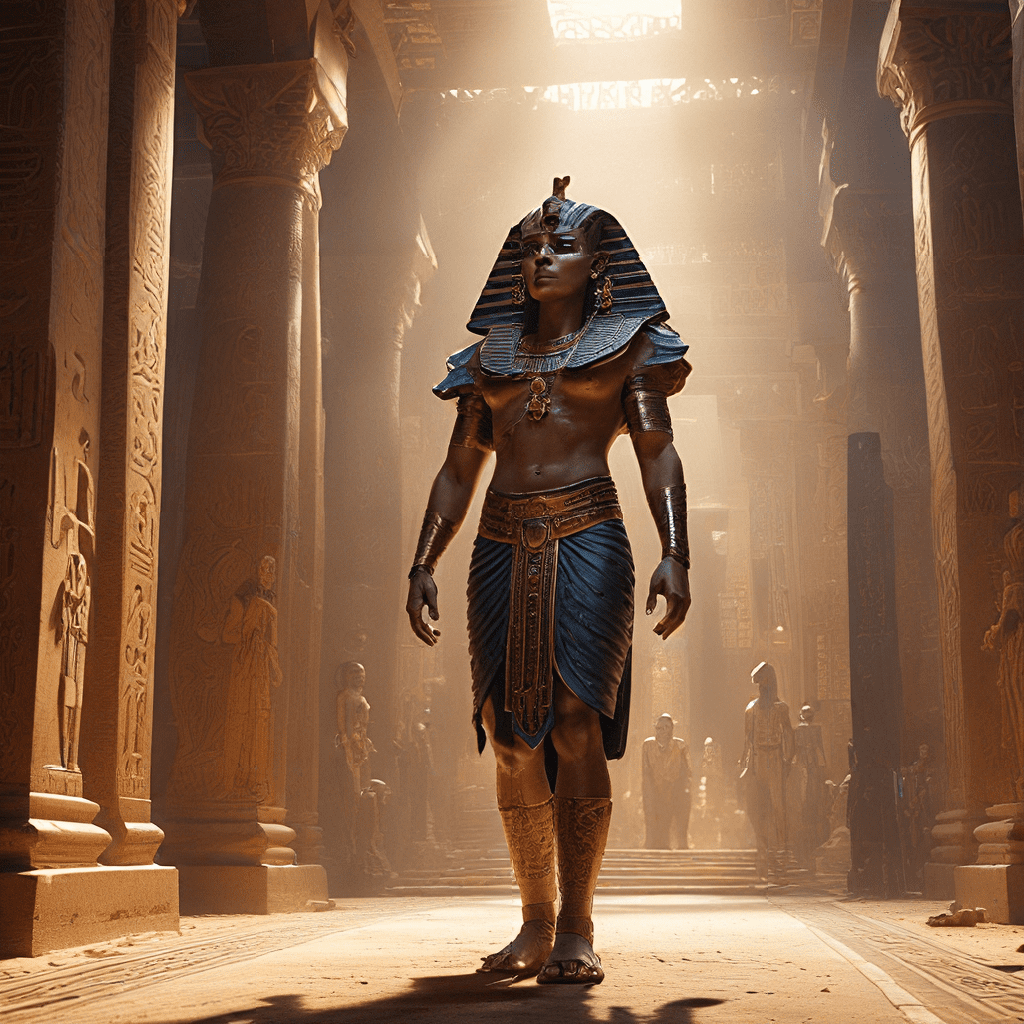1. Introduction: The Eternal Journey
For the Ancient Egyptians, death was not an end, but a transition. They believed in an afterlife, a realm where the soul continued its journey. This afterlife was not a simple continuation of life on Earth. It was a different kind of existence, where the soul would be judged and rewarded or punished based on its actions in life.
To ensure a successful journey into the afterlife, the Ancient Egyptians developed a complex set of rituals and beliefs. These rituals were central to their culture and society and aimed to prepare the deceased for the challenges that lay ahead in the realm of the dead.
2. The Journey of the Soul: From Death to Rebirth
The Ancient Egyptians believed that each person had a “ka,” a life force that resided in the body during life. Upon death, the ka separated from the body and embarked on a journey to the afterlife.
The soul’s journey began with a judgment by Osiris, the god of the underworld. Osiris weighed the heart of the deceased against a feather, symbolizing truth and justice. If the heart was found lighter than the feather, the soul was judged worthy of entry into the afterlife.
The “ba,” the soul’s personality and individuality, would remain connected to the body and the burial tomb. It could travel between the two realms.
Once the judgment was passed, the soul could become an “akh,” a glorified spirit that could dwell in the afterlife. The akh could join the other akhs in the Field of Reeds, a paradise filled with joy and abundance.
3. The Preparation for the Afterlife: Mummification
To ensure a successful afterlife journey, the Ancient Egyptians believed it was crucial to preserve the body for the ka to return. This led to the practice of mummification, an elaborate process that aimed to remove moisture and prevent decay.
The process of mummification involved a series of steps. First, the body was washed and cleaned. Then, the internal organs were removed and either preserved separately or placed in canopic jars. The body was then dehydrated using natron salt, a natural mineral.
The body was wrapped in linen bandages, often with amulets and protective spells to guide the deceased on their journey. The mummification process was time-consuming and expensive, but it was considered essential for ensuring a successful afterlife.
4. The Book of the Dead: A Guide to the Afterlife
The Book of the Dead was a collection of spells, hymns, and instructions meant to guide the deceased through the afterlife. It was often placed in the tomb alongside the mummified body.
The Book of the Dead contains spells that were meant to protect the deceased from dangers and provide them with the knowledge needed to navigate the underworld. These spells were believed to help the deceased overcome the challenges of the afterlife and reach the Field of Reeds.
A crucial section of the Book of the Dead is the “negative confessions,” a list of sins that the deceased must deny having committed before Osiris. These confessions were believed to be essential for a favorable judgment.
5. Offerings and Funerary Gifts: Provisions for the Journey
The Ancient Egyptians believed that the deceased would need provisions for the journey into the afterlife. They placed offerings in tombs to provide for the deceased’s needs. These offerings included food, drinks, jewelry, tools, and other items that would be useful in the afterlife.
Funerary gifts were often symbolic representations of objects that would be useful in the afterlife. For example, model boats represented the journey across the underworld, model fields represented agricultural abundance, and model houses represented a comfortable dwelling.
The offerings and gifts were meant to ensure the deceased’s comfort and well-being in the afterlife.
6. Funerary Temples and Tombs: Eternal Dwellings
Funerary temples and tombs were built to serve as the eternal dwellings of the deceased. These structures were often elaborate and adorned with religious imagery and symbolism.
Funerary temples were typically located near the tombs and served as a place for rituals and offerings. The walls of these temples were often decorated with scenes from the afterlife, stories of the gods, and the lives of the deceased.
Tombs were built to protect the mummified body and to provide a place for the ka to reside. Tombs could be simple or elaborate, depending on the wealth and status of the deceased.
The design and decoration of funerary temples and tombs were intended to reflect the importance of the afterlife. They aimed to ensure that the deceased had a safe and successful journey to the realm of the dead.




